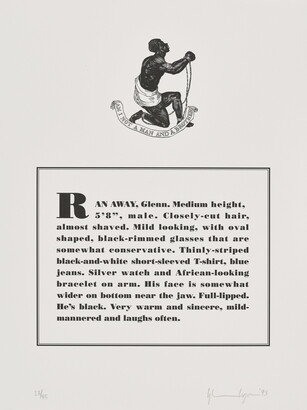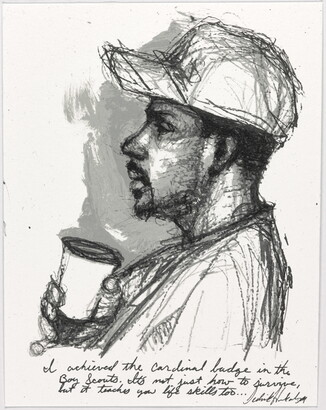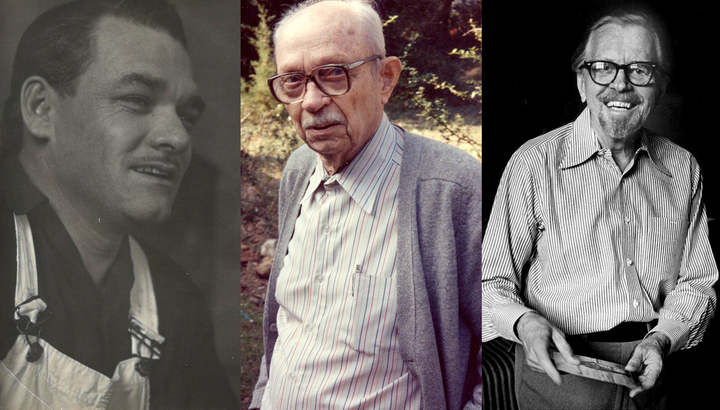The Carter Blog
Carter ARTicles
The visual resonance of Toni Morrison’s Song of Solomon
Jul 26, 2023
As a longtime Toni Morrison scholar and teacher, I am struck by the way her work invites multiple modes of interpretation—performance, music, geography, theology, and more. I teach a course on her at Texas Christian University, and I am always looking for new ways to present her work to students. Partnering with the Carter’s archivist and research librarian, Jon Frembling and Lauren Cannon, gave me the opportunity to do just that with my student project, “The Visual Dimensions of Morrison’s Song of Solomon.” Working with the Carter’s research team, I was able to gain new insight into how Morrison’s work can be interpreted in a visual context and open my students up to new possibilities for literary research and analysis.
In the aftermath of Morrison’s August 5, 2019, passing, there has been a rise in examining various aspects of her cultural influence. One area worth greater exploration is the visual. The image is very much something that animates Morrison’s work. She used what she called “literary archeology” to unearth new stories about Black experience that offer a new way of seeing. Her writing highlights both the “site of memory” (the physical archive of histories that she explores) and the “sight of memory” (the visual images that come forward in that archaeological process). So it felt right to engage students in this way when teaching Morrison’s 1977 novel Song of Solomon, which is primarily the story of Macon “Milkman” Dead III, a young Black man coming of age in Michigan. His life and that of his family is largely impacted by the legacy of slavery and the geographical upheaval of the Great Migration brought on by rampant lynching in the American South. In this amazing work, Morrison engages themes of movement, flight, and self-making amid the backdrop of traumatic histories.
Artwork by Glenn Ligon and Sedrick Huckaby
Slide Controls
Slides
My students explored these themes in works from the Carter’s collection: Glenn Ligon and his series Runaways, Sedrick Huckaby’s The 99%, and the 2022 Black Every Day exhibition. The following are some student testimonials of their time at the Carter:
As an English major, I mostly work with books, not pictures, and before this project, I had not thought that an image or photograph could inspire critical thinking about a text. I really enjoyed visiting the Carter for this project because I was exposed to different mediums, resources, and perspectives related to Toni Morrison’s Song of Solomon. My specific project focused on the journey of flight and what it means to fly away from yourself, your community, and the social chains that held you down. Until this project, I hadn’t critically paired art and literature together in ways where they would be in conversation with each other. Through this experience with [the] Carter, I have a deeper understanding about how the two can work together to tell stories.
Sarah Gregg
Through my experience at the Carter, I was able to learn how the Museum stores its archives and how the librarians can help people access them. I was able to get insight into what higher-level scholarly research entails. I was also able to critically analyze the photos and books we were presented with and choose the ones that related to the themes in Song of Solomon. I especially appreciated that the librarians took the time to choose and set out art and books for us that would touch on Song of Solomon's themes. I had a great experience!
Lydia Gilpin
Sarah’s and Lydia’s responses are representative of my students’ experiences researching and engaging the Museum alongside the work of Morrison. As I think on how work engenders deeper analysis of the “sight of memory,” I reflect on the power of images to tell stories, to preserve histories, and to move us beyond the page.
The Carter's research facilities offer an extensive range of resources to explore. Among them is a vast Library boasting an extensive collection of over 150,000 items. Additionally, the archives house a wealth of invaluable institutional and private papers. For a more intimate experience with artwork, visitors can access the Study Room, where they can closely examine objects from the collection and archives. From the latest periodicals and rare illustrated books to exquisite drawings and archival documents, there is always something captivating for visitors to enjoy.
If you would like to incorporate the Carter's collection, Library, or archives into your curriculum, contact us at research@cartermuseum.org. For more information about the Library, archives, and research at the Carter, please visit the Research page.







